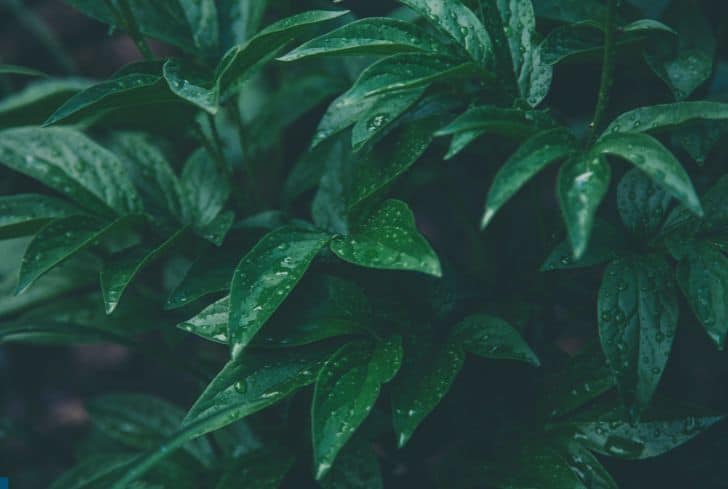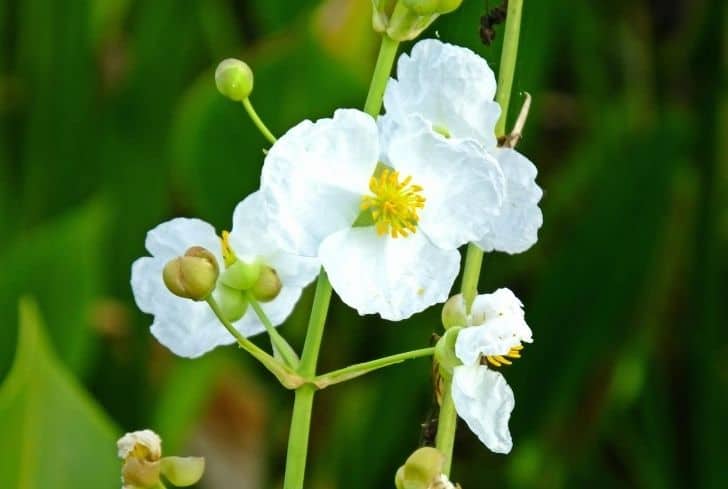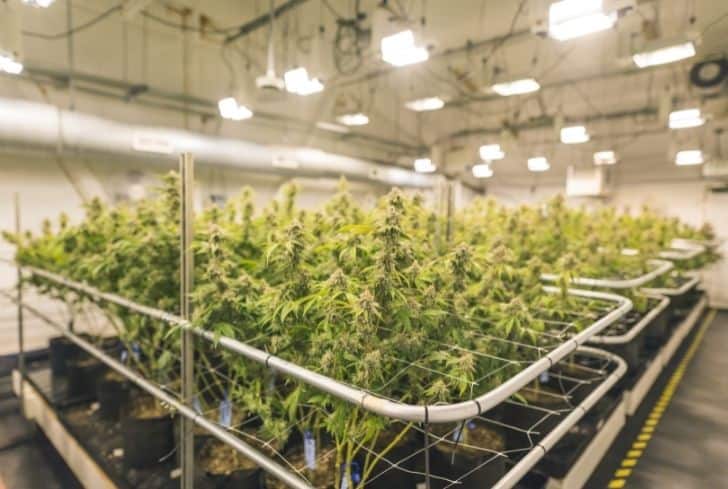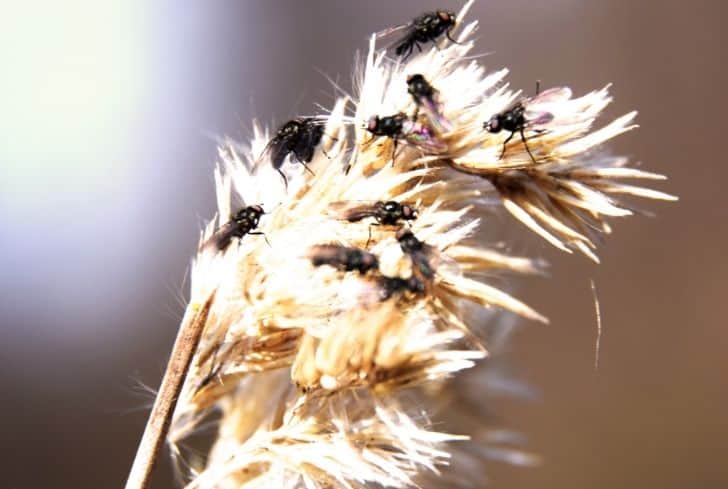Do Plants Sweat? (And What Causes It?)

We see humans sweating to cool off. Plants also sweat like humans to maintain their inner body temperature. The drops of water we see on the plants’ leaves in the morning are not all dewdrops; some drops result from plant sweating. Because of this sweating of plants, the air can feel cooler when you enter a forest.
Plants provide several ecosystem services to humans, including food, medicine, building materials, recreation, impact on Earth’s global water and carbon cycles and last but not least, cooling the atmosphere.
There can be multiple reasons why plants sweat and how it aids in the cooling process. This article will discuss plant sweating, its causes, and factors that expedite the process. We will also talk about indoor plants and how sweating of indoor plants plays a significant role in improving the indoor environment?!
Do Plant Leaves Sweat?
Yes, the secretion of water droplets from the pores of the leaves is called Plant sweat or Guttation and is used as a cooling mechanism. Trees and plants “sweat” through a process called transpiration. During the daytime, water and nutrients absorbed by plant roots from the soil are delivered to the stem and leaves to make food through the photosynthesis process.
Some amount of this water exits through pores present in its leaves known as stomata. It is what we call the sweating of plants. As this water or “sweat” evaporates from the leaves, heat is reduced, providing a cooling effect. Plants cool themselves and, at the same time, cool the surrounding air.
What Causes Plants to Sweat?
There is no magic behind the fact that the water disappears from a plant.
Instead, two natural phenomena in plants can cause plants to sweat (drip water):
1) Transpiration
2) Guttation
Transpiration is when water absorbed from the soil is evaporated or lost in the form of water vapors, and plants lose water. In this process, the water is carried through plants from the roots to tiny pores present under the leaves, where it evaporates to vapor and is released into the atmosphere.
Transpiration happens to take a break as plants need to breathe. Plants take in carbon dioxide, and to do this, they need to open their stomata. When this happens, water comes out.
However, Guttation is when the excess water and minerals are lost in the form of droplets. Both Guttation and Transpiration are the cause of plants’ sweating.
What Factors Can Increase Sweating in Plants?
The rate of transpiration can be affected by both abiotic and biotic factors. The effectiveness or speed of the transpiration process in plants depends on the temperature, humidity, strong wind, light, radiation, vapor pressure deficit (VPD), plant species, and other internal factors. Here are some of them.
1. Humidity
Plants sweat (drip water) more in an environment with less humidity than in an area with a noticeable humidity level. It is because the intercellular spaces in the leaf are typically saturated with water vapor.
Therefore, when the outside air is dry, water vapors in the intercellular areas diffuse rapidly, increasing the transpiration rate. However, when the air surrounding the plant is moist or humid, the transpiration rate decreases.
2. Temperature
Transpiration is dependent on the phenomenon of evaporation. A rise in temperature increases the rate of evaporation, increasing the transpiration rate simultaneously. The plant will also sweat more if the temperature of the leaf is high to reduce the temperature inside the plant.
3. Strong Wind
When the air is still surrounding the plant, transpiration makes the surrounding environment moist or damp. The water vapors develop and increase the humidity. When the air outside is dry, the transpiration rate will increase to moisten the air outside.
Similarly, on a windy day, the moist or damp air surrounding the leaves gets blown away, leaving dry air behind. The plants will increase the transpiration rate to make the air moist again around the leaf.
4. Light
Light affects the size of the stomatal openings in the leaves; thus, the transpiration rate is significantly affected by light. On a very sunny day, the stomata or opening on the leaf gets wide open, increasing the transpiration rate.
Conversely, the stomata may partially or wholly close down at night or in the shade, reducing the transpiration rate. During hot weather, water vapor is released rapidly, cooling the leaves. It also helps the plants from being scorched by the hot, harsh sun.
Does Transpiration Also Occur at Night?
Night-time transpiration occurs in many plant species, including indoor plants. Low-light indoor plants depend on sun flecks for the process of photosynthesis. Therefore, night-time transpiration is common for them.
Night-time transpiration also sometimes specifies a significant part of plants’ day-to-day and seasonal water use. Leaf stomata do not close completely as the stomata are already open.
Photosynthesis in plants can start as soon as the sun rises, leaving a space for water vapors to evaporate. Night-time transpiration may boost carbon fixation in plants during the early hours of daylight.
Transpiration Vs. Guttation
Transpiration is when the water absorbed from the soil is lost in water vapors. Guttation is when the excess water, minerals, and salt are lost in the form of droplets.
Only pure water is evaporated in transpiration. On the other hand, the water and various minerals and salts get removed as droplets in Guttation.
There are three aerial parts of the plant from where the water is lost in transpiration – stomata openings, lenticels present on shoots, and cuticles. In Guttation, the droplets are removed through pores, aka hydathodes present at the veins’ ends.
Transpiration affects the turgidity of the leaf, leading to the wilting of leaves. On the other hand, Guttation hardly has any apparent effect on the turgidity of the leaves.
Stomatal Transpiration is regulated by the guard cells present in the stomata. In Guttation, the opening and closing of pores, aka hydathodes, can’t be controlled.
Transpiration mainly occurs during the daytime, in the presence of sunlight. On the other hand, Guttation primarily happens at night or during the early daylight hours.
How Sweating From Houseplants Can be Prevented?
In the case of house plants, transpiration plays a significant role in improving the indoor environment. As a result of transpiration, sweating can help the plant remove its inner heat, reduce salt stress or remove any excess minerals in the form of droplets.
In addition, when the water droplets formed are evaporated into the outside air, it makes the outside air more moist or humid, reducing the surrounding air’s temperature. Hence, sweating can be good for plants’ overall growth and health and keeping cool or more humid environments in the house.
However, too much sweating can lead the leaf to lose its turgidity and wilt. Therefore sometimes, it requires preventing sweating.
The dripping of leaves reduces when the volume of water used to water the plants is reduced. The leaves are dripping because they have sufficient moisture to hold and expel the excess water. When it is humid, most plants will not need water as much as usual.
Follow your plants and accordingly adjust the amount of water you give them. Change your watering schedule from weekly to every week and monitor the plants if they still drip. They may start wilting between watering if you have shown a long gap. The amount of water needed varies around the year.
Benefits of Indoor Plants
Growing indoor plants improve our environment in many ways.
Indoor plants clean air and remove toxins from the air. Poor air quality causes headaches, coughing, sneezing, and other lousy symptoms of respiratory diseases. So it’s vital to have clean air.
Growing plants indoors helps reduce depression and anxiety as well as improves happiness. People having exposure and access more to greenery are happier and experience fewer symptoms of depression and anxiety.
Natural settings indoors give a calming effect. Looking at plants even has a therapeutic impact reducing stress, symptoms of low energy, upset stomachs and chest pain.
Indoor plants give a peaceful environment leading to a deep sleep that wonders for the immune system. People who don’t sleep well lack good health. So it’s essential to get some quality rest.
The plant can give you a fresh mind. Indoor plants improve productivity while performing mental tasks. Offices with indoor plants promote a good working environment where work performance increases and employees feel better, stay motivated and take fewer sick days.
Plants increase humidity. When plants absorb water, they sweat it out in transpiration that adds moisture to the air, creating humidity. Humidity is highly beneficial for those people living in dry climates. Humid rooms help slow down the spread of viruses, reduce airborne allergies, and keep skin and hair hydrated. Plants growing around your home works as a natural humidifier.
Plants reduce noise. Plants help to keep the noise levels down. Trees and shrubs have historically been used alongside roads to minimize noise from traffic. However, recent research shows other plants reduce noise indoors too! Growing plants indoors creates a quieter home as leaves absorb, reflect, and obstruct background noise for better concentration and productivity.






